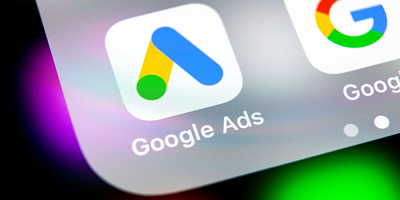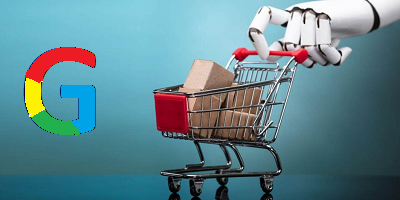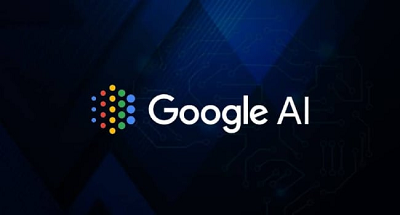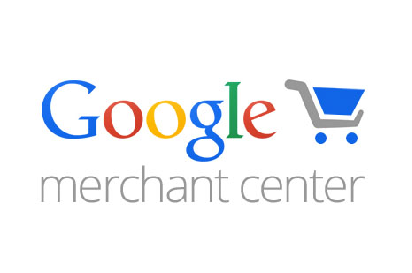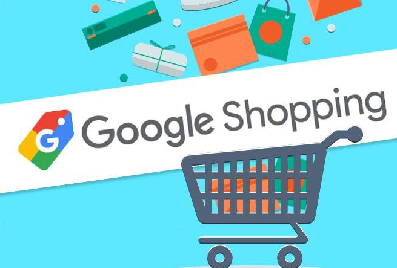Google modifies shopping ads policies to enhance transparency
Google has announced changes to its shopping ads policies to improve transparency for users. Firstly, Google will now require advertisers to provide more specific and accurate information about the products they are promoting. This includes details such as the brand, size, and color of the item. This will help users make more informed decisions when they are shopping online. Secondly, Google is introducing a new “about this ad” feature. This feature will provide users with additional information about the ads they see, such as how the ad is personalized based on their browsing habits. Users will also be able to access details about the advertiser, such as their business name and website. These changes aim to provide users with more transparency and control over the ads they see. Users will be able to understand why they are seeing certain ads and make more informed choices when it comes to their online shopping. Overall, Google’s new shopping ads policies will help enhance the transparency of online advertising and provide users with a better shopping experience.
Google has announced changes to its shopping ads policies aimed at enhancing transparency for users. Advertisers will now have to provide more specific and accurate information about the products they are promoting, including details such as the brand, size, and color of the item. This will enable users to make more informed purchasing decisions. Additionally, Google is introducing a new “about this ad” feature that will offer users more information about the ads they see. This includes insights into how the ad is personalized based on their browsing habits, as well as details about the advertiser’s business name and website. These policy updates are designed to provide more transparency and control to users, allowing them to better understand why they are seeing certain ads and make more informed choices when shopping online. By enhancing the transparency of shopping ads, Google aims to improve the overall shopping experience for users and boost trust in online advertising.
Google introduces Product Studio, that creates product imagery using generative AI
Google recently announced the launch of Product Studio – a product imagery platform powered by generative artificial intelligence. This new platform dramatically reduces the time and effort required to create convincing product imagery, allowing product teams to quickly and cost-effectively create realistic product images for their marketing campaigns. Generative AI enables Product Studio to create complex product scenes with extreme detail and customization. In a single click, Product Studio synthesizes product imagery from simple 3D models, automated layouts, and custom design elements. These AI-generated images are of a production-ready quality and fully customizable, allowing users to craft their ideal product imagery in just a few clicks. Product Studio’s generative AI is extremely versatile and can produce product images in a variety of styles and layouts.
The platform can visualize product combinations via layered imagery, offer “in-context” views that place products in scenes of the user’s choosing, and generate product GIFs that bring the product to life. Moreover, the platform supports integration with other Google tools, including Google Material Design, which offers more than 1000 design elements for users to explore and interact with. Product teams can use this library to quickly find design elements that match their brand, and to customize the product imagery to fit their marketing goals. Overall, Product Studio is a powerful new tool for product teams seeking to create sophisticated product imagery without the expense and time associated with more traditional methods. Its generative AI-driven approach enables users to rapidly create detailed product images for marketing campaigns, allowing teams to stay ahead of the curve in a highly competitive online environment.
Google plans to add end-to-end encryption to Authenticator
End to end encryption is a type of digital security that ensures data is only accessible at the source and destination even if the data is intercepted while in transit. It is used for protecting data and communications while they are being stored and shared online. Google’s plan to add end-to-end encryption to Authenticator is a major move for online security. Authenticator is a mobile app that generates secure codes to verify identity when logging into an online account. Currently, Authenticator generates codes using cryptographic algorithms but the data and codes remain on Google’s servers, posing risk of hacking. Google’s end-to-end encryption for Authenticator would greatly enhance the security of personal information and data stored in the app. With encryption enabled, each code would be uniquely encrypted and stored on the user’s device, meaning it would never be visible on Google’s servers. This would make it much more difficult for hackers to steal codes and gain access to accounts.
In addition, encrypted codes could also be used to prevent data leakage or manipulation. For example, if a hacker intercepted an Authenticator code while in transit, the code would be useless since it would be rendered unreadable without the decryption key. The implementation of end-to-end encryption for Authenticator is a positive step by Google towards protecting users’ data. Not only would it make it more difficult for hackers to gain access to users’ accounts, but it would also improve the integrity of the data stored on Authenticator. However, it is important to note that this encryption does not guarantee the security of user data. For example, if the device is not secured properly or the user discloses their encryption keys, the security then becomes questionable. It is then up to the user to take extra measures to ensure their data is as secure as possible. Overall, Google’s plan to add end-to-end encryption to Authenticator is a great move towards improving online security. It will provide an added layer of protection for users’ data, while also allowing them to have more control over how and where their data is stored.
Artificial Intelligence is now at core of all Google products
Artificial Intelligence has become a major part of Google’s everyday operations, and it has been a driving force behind their products for many years. Google’s use of machine learning is changing how their products are used, made, and marketed. AI performs many functions throughout Google’s products, and its incorporation into their core operations is a major moment in the tech industry. AI-driven products have been around for years at Google, such as the Google Home voice assistant, the Google Photos app, and the Google Translate web tool. But with AI, these are becoming even more powerful and efficient. Google is integrating machine learning into search results, marketing campaigns, product categorization, feature delivery, and even product design and development. By using machine learning algorithms, Google can make more accurate decisions, analyze large amounts of data quickly, and provide more personalized results. Google’s AI products are being designed to anticipate user needs and provide personalized recommendations. For example, by analyzing user search trends and habits, Google can anticipate the topics a user is likely to be interested in and make suggestions based on that.
Similarly, Google’s AI products can draw on its store of knowledge to provide more accurate response to queries. Google is also leveraging artificial intelligence to develop more efficient and intuitive user experiences. For example, by leveraging its deep learning and facial recognition capabilities, Google Clips can identify family members in photos and make it easier to share them with them on Google Photos. Similarly, Google’s voice assistant can recognize your voice and provide you with personalized results based on your preferences and interactions with Google Home. By incorporating machine learning into its products, Google is enabling its platforms to become more powerful and intuitive than ever before. Google’s goal is to build a platform that can respond intelligently to user queries, provide smarter results, and make life easier. And with AI as a key part of its product lineup, Google is well on its way to achieving that goal. In short, Google’s incorporation of machine learning into all of its products is a huge step forward in the technology industry. AI is able to provide users with smarter and more efficient products, as well as improvements in search results, product design, marketing and more. Google’s continual investment in AI makes them a leader in developing smarter products and services that make life easier.
Google now allows virtual food brands to have Google Business Profiles
Google Business Profiles (formerly known as Google My Business) are an online platform that allows businesses to create and manage an online presence on Google, including search and maps. The profiles are designed to help businesses connect with customers and promote their products or services. With Google Business Profiles, businesses can create an online presence for their business, add photos, and list their contact information, hours of operation, and other business information. Google Business Profiles are becoming an increasingly popular way for businesses to get noticed and reach potential customers. This is especially true for virtual food brands, which can benefit greatly from having a presence in the digital world. By having a Google Business Profile, a virtual food brand can promote its products and services, increase visibility, and reach new customers. Google Business Profiles allow virtual food brands to create a profile with information about their business and services. This includes photos, contact information, business hours, and a description of the products or services they offer.
They can also include links to their website, social media accounts, and other online resources. Google Business Profiles also provide virtual food brands with an opportunity to engage with customers. This includes responding to customer reviews, answering questions, and providing customer service. This engagement helps to build trust and loyalty with customers, which can lead to more sales. Additionally, Google Business Profiles can be used to promote special offers and discounts. This can be a great way to attract new customers and keep existing customers coming back. Virtual food brands can also use the profile to feature recipes, provide cooking tips, and share nutritional information. Finally, Google Business Profiles can be used to promote events such as food festivals and cooking classes. This can be a great way to reach potential customers and create buzz about the brand. In conclusion, Google Business Profiles are a great tool for virtual food brands to promote their products, services, and events. They can provide customers with helpful information, build trust and loyalty, and attract new customers. With a Google Business Profile, a virtual food brand can take advantage of the power of the internet to reach new customers and grow their business.
Google helpful content system can now impact Google Discover visibility
Google’s Helpful Content System is a new algorithm that was released in 2020. This system was designed to recognize and reward helpful content and make it easier for people to discover it on Google. This system is designed to help people find the most helpful content when searching for something on Google. Google’s Helpful Content System uses signals such as engagement and click-through rate (CTR) to identify helpful content. Content is identified as helpful if it has high engagement, such as a high click-through rate or comments on the content. Content is also identified as helpful if it provides users with a solution to a problem they may be experiencing. Google’s Helpful Content System also uses other signals to determine if content is helpful. These signals include the number of people who have shared the content, how long people spend on the content, and how often the content is viewed.
Content that is found to be helpful is then given more visibility on Google. This is done through a combination of improved rankings in Google’s search results and higher visibility in Google Discover. Google Discover is a feature that allows users to discover content on Google without having to type in a specific query. Google Discover uses an algorithm to determine what content is relevant to a user based on their search history and other factors. With the introduction of Google’s Helpful Content System, Google Discover is now able to recognize and prioritize helpful content. This means that helpful content is more likely to be seen by users on Google Discover. Google’s Helpful Content System is an important step in making sure that helpful content is seen by more people. By recognizing and rewarding helpful content, Google is able to improve the user experience and help people find the content that is most helpful to them. Google’s Helpful Content System has already had a positive effect on Google Discover and will likely continue to do so in the future.
Google Merchant Center tips: Supplemental feeds and feed rules
Google Merchant Center (GMC) is a powerful tool for online retailers to reach and engage with customers. It is a great way to get your products seen by potential customers and to increase your sales. One of the best ways to get the most out of GMC is to use supplemental feeds and feed rules. Supplemental feeds are an optional feature in GMC that allow you to supplement your main product feed with additional information. This information can include product images, product descriptions, product reviews, promotions, and more. This extra information can be used to target specific customers or to highlight special offers. Supplemental feeds are especially useful for products that require extra information to be understood or to be competitively priced. Feed rules are a powerful tool to automate and optimize your product feed.
Feed rules allow you to automatically exclude certain products from your feed, such as those that are out of stock or those that are not in line with your brand’s image. You can also use feed rules to add specific attributes to your feed, such as color or size. This will help you to target specific customers and to ensure that your product listings are up to date and accurate. Using supplemental feeds and feed rules in GMC is an effective way to get the most out of your product listings. Not only can it help you target potential customers better, but it can also help you stay competitive in the online marketplace and ensure that your product listings are accurate and up to date. This will help you to increase your sales and to reach new customers. Overall, using supplemental feeds and feed rules in GMC is a great way to optimize your product listings and to get the most out of your product feed. It can help you to target specific customers and to ensure that your product listings are accurate and up to date. This will help you to reach more customers and to increase your sales.
Google Reduces the Unique Product Identifiers Enforcement on Free Product listings
Google has recently reduced the enforcement of unique product identifiers on free product listings. This is a big change from the previous policy, which required all sellers of products listed on Google Shopping to have a unique product identifier for every item. This policy was designed to ensure that consumers had access to accurate, up-to-date product information when searching for a particular item. The new policy is meant to help make it easier for small businesses to list their products on Google Shopping and to make the overall shopping experience more efficient. With this new policy, sellers will no longer need to provide a unique product identifier for each product they list. Instead, they will be able to use the same product identifier for multiple products in the same category. This will make it easier for them to list their products on Google Shopping without needing to create a unique identifier for each item.
This change will also help to make it easier for shoppers to search for and find the products they are looking for. Since they won’t need to search for a unique identifier, they will be able to quickly find what they are looking for. This is especially beneficial for shoppers who are in a hurry and don’t have the time to search for a unique identifier. Overall, this change is a great benefit for small businesses and shoppers alike. It helps to simplify the product listing process and makes it easier for shoppers to find the products they are looking for. This is especially beneficial for small businesses, who often don’t have the resources to create a unique product identifier for each item they list. With this new policy, they can now list their products on Google Shopping without needing to create a unique identifier for each item. This will help to make it easier for them to list their products and make it easier for shoppers to find the products they are looking for.
Google Showing Return Grace Period within some Product Search Results
Google has recently introduced a new feature that allows customers to return certain products within a grace period following purchase. This feature is designed to help customers make more informed purchasing decisions and to provide greater peace of mind for customers who may be unsure of the suitability of a product. When customers search for a product on Google, the results will often include a “return grace period” label. This label indicates that the product can be returned within a certain time frame, usually within 30 days. This feature is available on select products, including certain types of electronics, clothing, and home goods. The return grace period feature allows customers to make better decisions when deciding to purchase a product.
By having the option to return a product if it doesn’t meet expectations, customers are more likely to make a purchase knowing that they can return the product if needed. This feature also provides greater assurance for customers who may be unsure about the suitability of a product for their needs. In addition to providing customers with greater assurance when making a purchase, the return grace period feature also allows businesses to better manage customer expectations. By providing customers with a clear indication of the return policy for a product, businesses can avoid any misunderstandings or disputes with customers about the return policy. The return grace period feature is beneficial for both customers and businesses. By providing customers with greater assurance and businesses with better clarity, the return grace period feature helps to ensure a better buying experience for both parties. The feature is currently available on select products, and Google is expected to expand the feature to more products in the future.
Google’s trying to become a One-stop Shopping Destination
Google is a global technology giant, and it is now attempting to become a one-stop shopping destination. Google is making strides in the e-commerce space by allowing users to purchase items directly from its search engine and various other platforms. This move will save users time and effort, as they won’t need to visit multiple sites to compare products, prices, and features. Google has partnered with major retailers, such as Walmart and Target, to enable shoppers to purchase items directly from its search results. In addition, Google has launched its own shopping platform, Google Shopping, through which users can access millions of products from thousands of online retailers. This platform offers a variety of filters, such as price, brand, and user ratings, to help shoppers find the most suitable products.
Google also allows users to make payments directly through its Google Pay service, which is integrated with its search engine, YouTube, and other platforms. This integration allows users to make quick and secure payments without having to leave the Google platform. Google’s one-stop shopping destination is designed to provide users with a convenient and seamless shopping experience. By enabling users to search, compare, and purchase items from the same platform, Google is making it easier for shoppers to find the products they need. Google is also investing heavily in artificial intelligence and machine learning technologies to better understand consumer preferences and shopping trends. This data can then be used to personalize offers and recommendations for users. Ultimately, Google’s goal is to become the go-to destination for all online shopping needs. By providing users with a convenient and secure shopping experience, Google is well on its way to achieving this goal.





